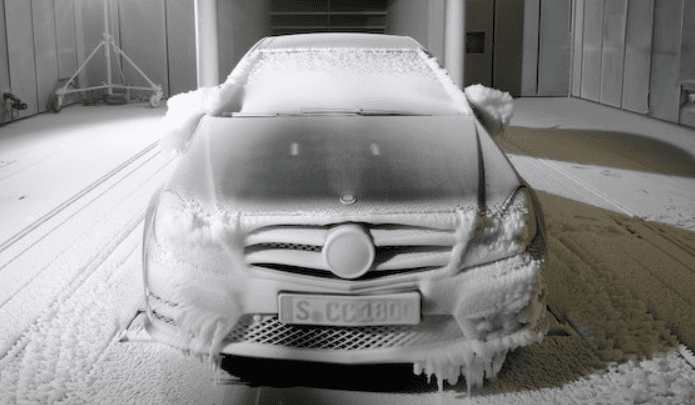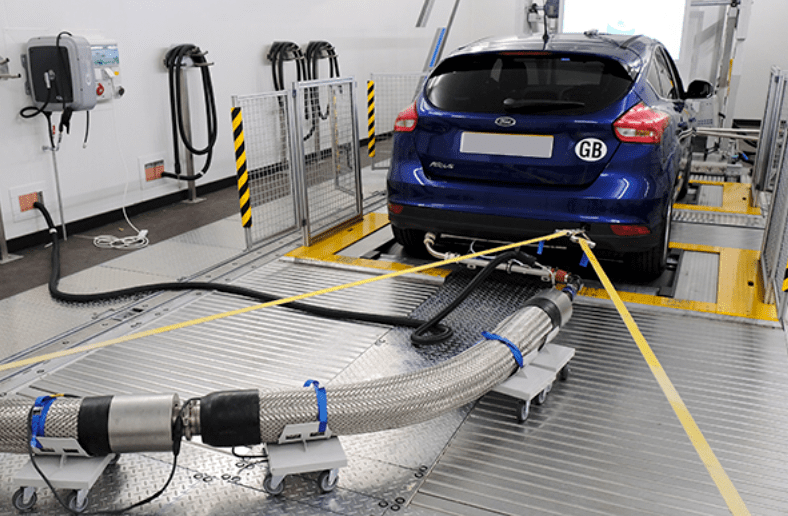Types Of Vehicle Testing In The Automotive Industry
Hello guys, welcome back to our blog. Here in this article, we will discuss the types of vehicle testing in the Automotive Industry, the purpose of each vehicle testing, and its different terms.
Ask questions if you have any electrical, electronics, or computer science doubts. You can also catch me on Instagram – CS Electrical & Electronics
Also, read:
- Tools Used For Unified Diagnostics Services
- Different Types Of NRCs (Negative Response) In UDS
- Difference Between CAN And CAN TP (Transfer Protocol)
Vehicle Testing In The Automotive Industry
Vehicle testing is a critical process in the automotive industry, ensuring that every vehicle meets stringent safety, performance, and regulatory standards before hitting the market. With the increasing complexity of modern vehicles—featuring advanced electronics, autonomous functionalities, and more stringent emission regulations—comprehensive testing is essential to identify and resolve potential issues early in the development process. By simulating real-world conditions and assessing various performance aspects, vehicle testing ensures that every system, from the engine to electronic controls, functions seamlessly and safely.
Different types of vehicle testing, such as functional, safety, durability, and environmental tests, cover every component and subsystem of a vehicle. These tests validate that a vehicle not only meets consumer expectations but also complies with government standards across regions. By undergoing rigorous testing, vehicles are better equipped to deliver a reliable and safe driving experience, ultimately enhancing customer satisfaction, brand reputation, and, most importantly, road safety.
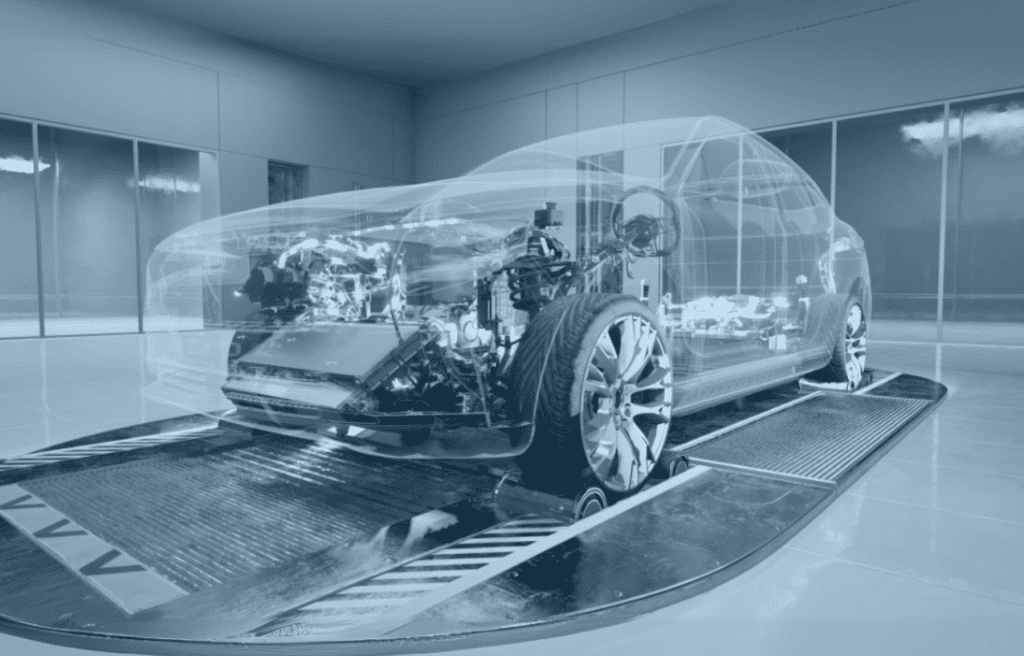
01. Functional Testing
Functional testing ensures that each vehicle component performs as expected in various scenarios, simulating real-world use. This includes systems such as brakes, lights, wipers, infotainment, and power windows. Functional tests aim to identify any flaws or malfunctions in individual components, allowing engineers to refine and enhance them before mass production.
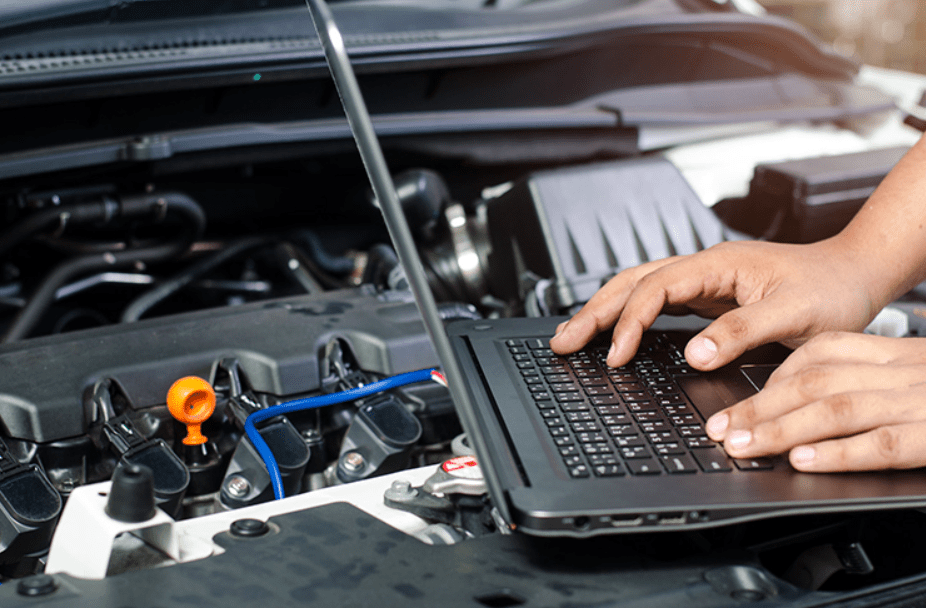
Example: During functional testing, the braking system undergoes various assessments, such as emergency braking at different speeds and gradual deceleration tests. Engineers evaluate whether brakes respond instantly and consistently under all conditions, including both dry and wet roads.
In the automotive industry, the infotainment system is also a critical focus of functional testing. Engineers check for features like responsiveness, connectivity, display clarity, and even voice recognition accuracy to ensure a smooth user experience. This is crucial for minimizing driver distraction and improving ease of use.
Functional testing extends to every minor aspect of the vehicle. For instance, window wipers are tested under heavy rain simulation to ensure that the blades clean the windshield adequately without leaving streaks. This helps enhance driver visibility, directly impacting safety.
02. Durability Testing
Durability testing assesses a vehicle’s longevity and endurance under harsh conditions over time. By simulating thousands of hours of driving or exposing vehicles to rough terrains and extreme weather, this testing gauges the overall build quality and wear resistance of components like the chassis, suspension, and engine.
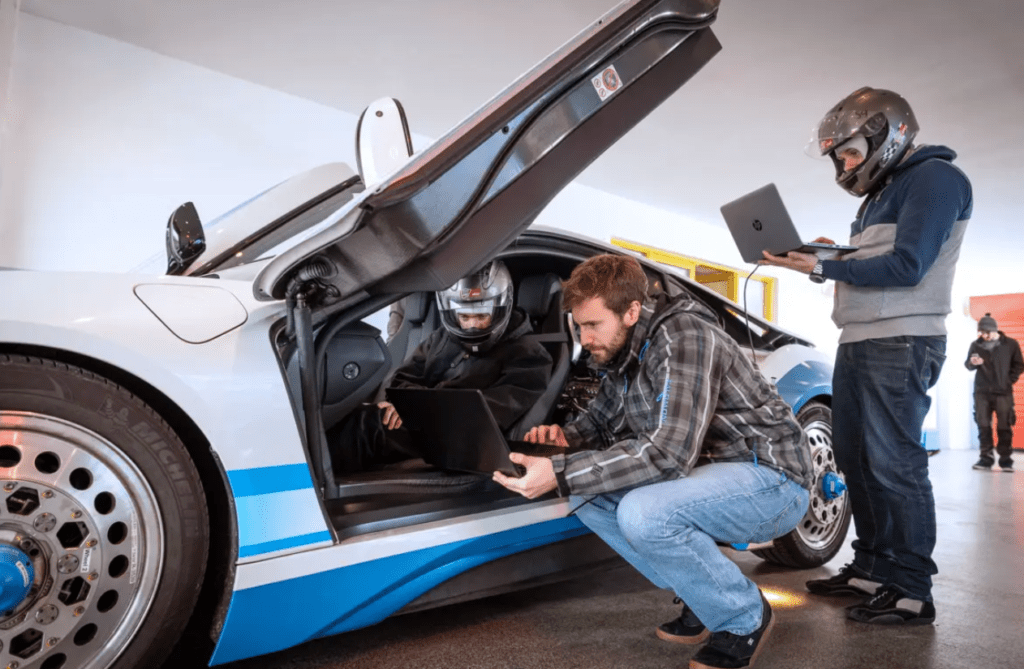
Example: In durability testing, a vehicle might be driven over rough, uneven terrain for an extended period to check how the suspension and chassis withstand repetitive impact. This helps engineers reinforce weak points, ensuring that the vehicle remains reliable over time for users who frequently drive in rough conditions.
Extreme temperature testing is another example, where vehicles are exposed to high and low temperatures in specialized climate chambers. Components like rubber seals, electrical wiring, and adhesives are observed to ensure they don’t crack or degrade. This helps prepare vehicles for diverse environments, from desert heat to freezing winters.
Durability tests also include evaluating the longevity of paint and finishes. In salt spray tests, for example, vehicles are exposed to a salt-rich environment to see how they withstand corrosion. This is especially vital for regions with snowy climates where roads are salted, as it helps improve the vehicle’s lifespan and appearance over time.
03. Safety Testing
Safety testing focuses on assessing how well a vehicle protects occupants and pedestrians in the event of an accident. It includes crash tests, rollover assessments, and pedestrian safety tests, all of which are vital for regulatory compliance and to enhance public trust in the brand.
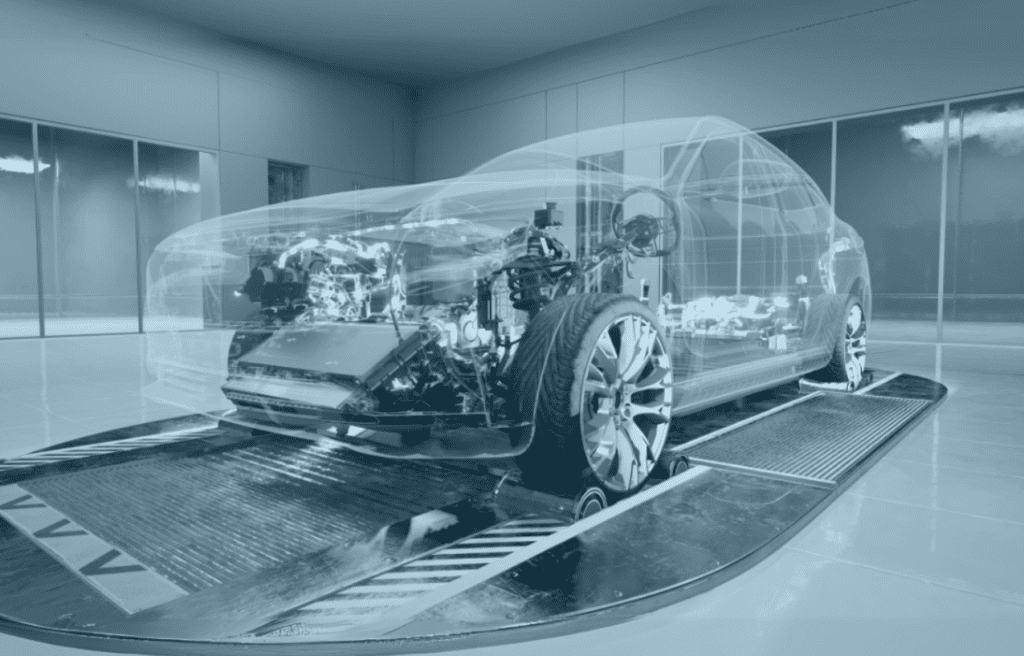
Example: Crash tests are among the most critical safety assessments, involving head-on, side-impact, and rear-end collision scenarios. In a frontal crash test, a vehicle crashes into a fixed barrier at a set speed while dummies inside measure the potential for injury. This data helps engineers design features like airbags, crumple zones, and seatbelt systems.
Rollover testing assesses the vehicle’s stability and resistance to tipping in scenarios like sharp turns or sudden swerving. SUVs, for instance, undergo extensive rollover testing due to their higher center of gravity. By improving stability control and other features, manufacturers can reduce the likelihood of rollovers, enhancing occupant safety.
Pedestrian safety testing evaluates how a vehicle’s front end impacts a pedestrian in an accident. Certain design elements, such as a hood with a soft structure or deployable airbags on the exterior, help reduce injury severity. This testing has become more critical with stricter pedestrian safety regulations in many regions.
04. Emission Testing
Emission testing measures the level of pollutants a vehicle releases, ensuring compliance with environmental regulations. This test evaluates gases like CO₂, NOx, and hydrocarbons, focusing on both tailpipe emissions and evaporative emissions from the fuel system.
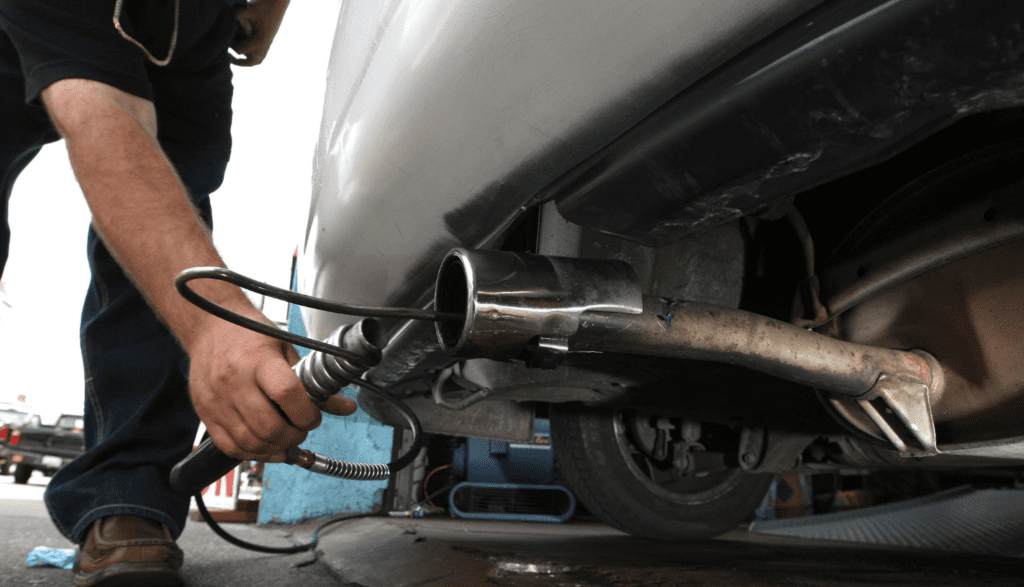
Example: In emission testing, a vehicle is placed on a chassis dynamometer, which simulates driving conditions. The exhaust gases are measured to determine if they meet regulatory limits. For instance, diesel vehicles are scrutinized for NOx emissions, which are harmful pollutants. Failures lead to design changes in engines and exhaust systems to minimize these emissions.
Evaporative emission testing evaluates fuel system leaks by placing the vehicle in a sealed chamber to measure vapor levels. This test helps prevent gasoline fumes from polluting the air, which is crucial for minimizing volatile organic compounds (VOCs) that contribute to smog formation.
Electric and hybrid vehicles also undergo emission testing, albeit with a focus on their overall carbon footprint. For instance, hybrid cars are tested to check if they meet emission standards when switching between electric and fuel-powered modes. This ensures their environmental impact is minimized even with fuel usage.
05. Performance Testing
Performance testing assesses how well a vehicle performs under various driving conditions, such as acceleration, braking, handling, and top speed. These tests ensure that the vehicle meets its expected performance benchmarks and provides a satisfying driving experience.
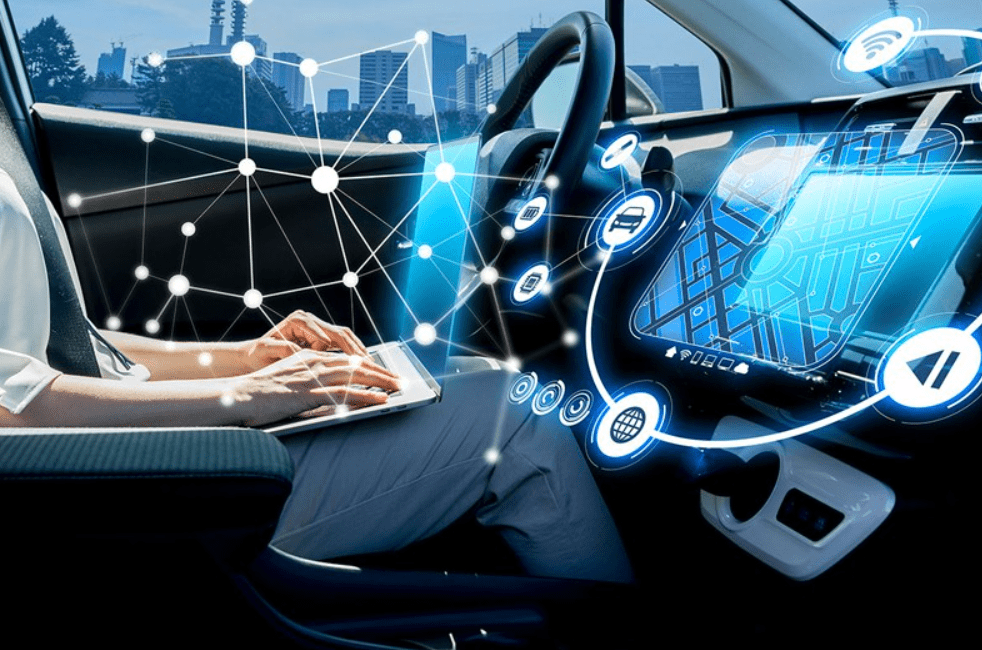
Example: Acceleration testing is one of the most common performance evaluations, where a vehicle is tested to determine how quickly it can go from 0 to 60 mph. High-performance vehicles undergo extensive acceleration tests to meet their advertised specs. This helps manufacturers optimize the engine and transmission for smooth power delivery.
Braking tests measure the vehicle’s ability to decelerate effectively and within a safe distance. In a braking test, the vehicle is accelerated to a specific speed, then brakes are applied at full force to measure the stopping distance. The effectiveness of ABS (Anti-lock Braking System) is also assessed to ensure that the vehicle can stop quickly without losing control.
Handling tests check the vehicle’s response to steering inputs at different speeds and conditions, such as sharp turns, lane changes, and cornering. Sports cars, in particular, are tested for agile handling in challenging scenarios, and their suspension and steering systems are tuned to optimize road grip.
Top speed testing involves driving the vehicle at the maximum possible speed on a closed track. While not essential for everyday vehicles, high-speed performance is crucial for sports and luxury cars, and testing verifies that the car performs safely at high speeds, with stable aerodynamics and efficient cooling systems.
06. Electrical and Electronic Systems Testing
Electrical and electronic system testing ensures the functionality, reliability, and security of all electronic systems, from infotainment to Advanced Driver Assistance Systems (ADAS). This testing is increasingly important as modern vehicles rely heavily on electronic controls and software.
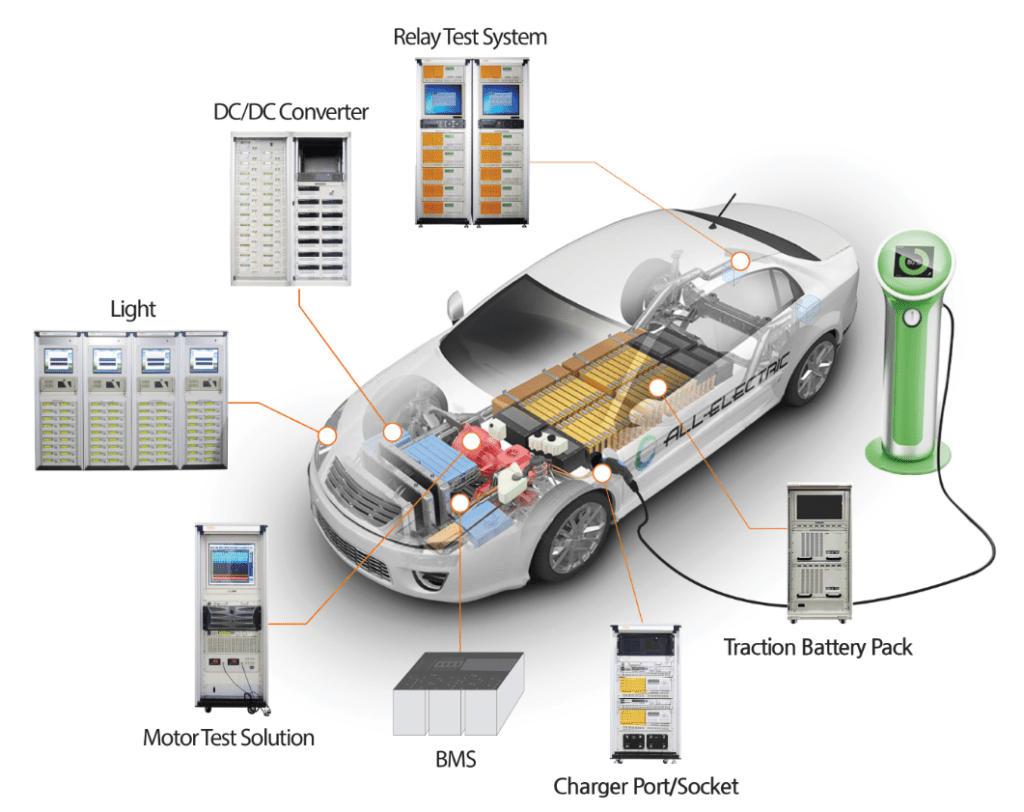
Example: Infotainment testing is a core part of electronic system testing, evaluating aspects like user interface responsiveness, connectivity to smartphones, GPS accuracy, and software updates. Engineers simulate common scenarios to ensure the infotainment system doesn’t crash or lag during use, providing a reliable and user-friendly experience.
ADAS testing focuses on systems like adaptive cruise control, lane-keeping assist, and automatic emergency braking. These systems are tested under real-world conditions to ensure they respond accurately to obstacles, other vehicles, and lane markings. For instance, automatic emergency braking is tested to see if it detects an obstacle ahead and brakes effectively to avoid a collision.
Cybersecurity testing is another crucial part of electronic system evaluation, especially with the rise of connected and autonomous vehicles. Simulations of cyberattacks help identify vulnerabilities in-vehicle software and data transmission, leading to security improvements that protect against unauthorized access and hacking attempts.
Battery and charging system testing is essential for electric vehicles (EVs). Engineers evaluate how quickly a battery charges, its performance over time, and the efficiency of energy usage. Temperature tests are conducted to see if the battery overheats, ensuring that the EV can operate safely in diverse conditions.
07. Automated and Autonomous Testing
Automated and autonomous vehicle testing examines how well a vehicle’s automated systems perform in various scenarios. This includes the testing of radar, LiDAR, cameras, and machine learning algorithms that enable the vehicle to interpret and respond to its surroundings.
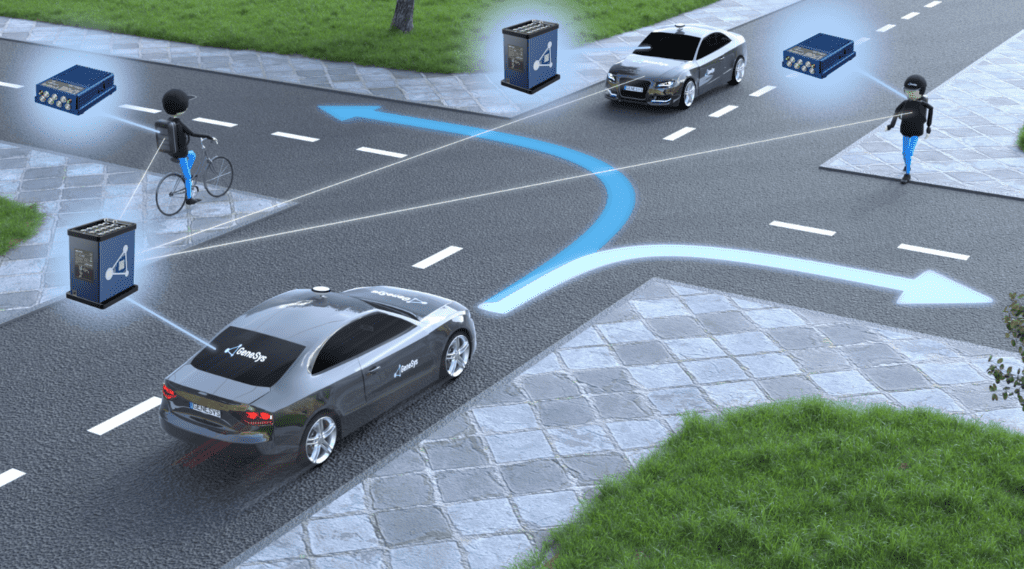
Example: In an obstacle detection test, autonomous vehicles are placed in an environment with various stationary and moving obstacles, such as pedestrians, animals, or other cars. The sensors and algorithms are evaluated based on their ability to detect obstacles, calculate distances, and respond in real time to avoid collisions.
Highway merging is another complex scenario tested for autonomous vehicles. Here, the car must sense nearby vehicles, calculate gaps, and merge smoothly into fast-moving traffic. Engineers simulate different traffic patterns and speeds, ensuring the vehicle can safely merge and adjust its speed as necessary.
Traffic sign and signal recognition tests assess the vehicle’s ability to detect and interpret road signs and signals, like stop signs, speed limits, and traffic lights. This involves testing the vehicle’s cameras and image-processing algorithms, allowing it to adjust speed or halt as needed in response to different signs and signals.
Urban driving scenarios, such as navigating intersections, pedestrians, and cyclists, are especially challenging for autonomous vehicles. Engineers test these scenarios extensively, assessing the vehicle’s ability to recognize complex traffic patterns, identify objects, and make decisions without human intervention.
08. Climate Testing
Climate testing evaluates how well a vehicle performs in different weather conditions. Conducted in climate-controlled facilities, this testing replicates extreme heat, cold, humidity, and wind to check if components and systems remain reliable.
Example: Extreme heat testing involves placing the vehicle in a hot climate chamber, simulating desert conditions. Engineers observe whether systems like engine cooling, air conditioning, and electrical components can withstand high temperatures without malfunctioning. This helps prevent issues like overheating and ensures comfort for passengers.
Cold climate testing simulates freezing conditions to see how well the vehicle starts and operates at low temperatures. Components like the battery, fuel system, and heating systems are closely monitored, as they can be particularly affected by cold weather. For electric vehicles, battery efficiency at low temperatures is critical for maintaining range and power.
Humidity testing is crucial for regions with high moisture levels, as humidity can cause condensation within the vehicle. Engineers check for water leaks, corrosion, and moisture buildup that might damage electronics or interiors. Windshield wipers, for instance, are tested to ensure clear visibility even in heavy rain.
High-altitude testing assesses a vehicle’s performance in low-oxygen environments, where engines can struggle due to decreased air density. For instance, turbocharged engines are tested for performance in simulated high-altitude conditions to ensure they maintain power and efficiency.
09. Noise, Vibration, and Harshness (NVH) Testing
Noise, Vibration, and Harshness (NVH) testing evaluates the levels of noise and vibration within the vehicle to enhance the driving experience. This testing helps reduce undesirable sounds and vibrations that might compromise passenger comfort.
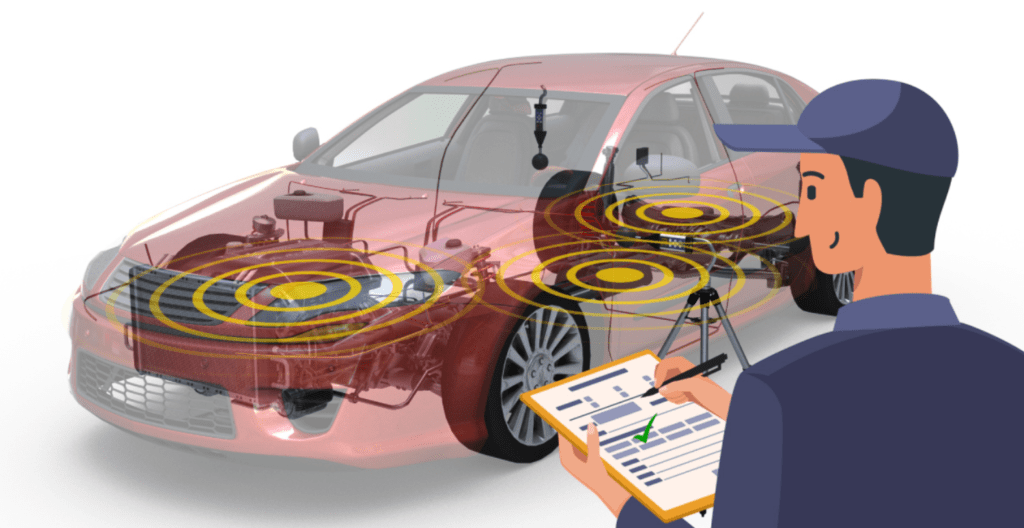
Example: Engine noise testing measures the sound emitted from the engine at different RPMs, helping engineers develop soundproofing solutions to reduce engine noise inside the cabin. This improves the overall comfort of the vehicle, especially for luxury models where quiet cabins are prioritized.
Road noise testing evaluates the impact of different road surfaces, such as asphalt, gravel, or concrete, on cabin noise. Engineers use microphones and vibration sensors to identify areas where soundproofing materials are needed to minimize road noise.
Wind noise testing assesses how well a vehicle’s aerodynamics control noise at high speeds. Vehicles are tested in wind tunnels, where engineers observe if the airflow causes whistling or roaring sounds around windows and doors. Improving aerodynamics helps reduce these noises, especially in highway driving.
Interior noise testing examines sound levels from various internal systems, such as fans, air conditioning, and speakers. Ensuring these systems operate quietly enhances the in-cabin experience, making NVH testing an essential part of creating a refined, comfortable interior environment.
10. Road Testing
Road testing takes place on actual roads and is often the final step in vehicle testing before production. It evaluates the overall performance of the vehicle under real-world conditions to identify any issues that may not surface in controlled environments.

Example: Highway driving tests are conducted to check the vehicle’s performance at higher speeds and its response to traffic. Engineers evaluate factors like fuel efficiency, noise levels, and stability to ensure the vehicle meets expectations in open-road scenarios.
Urban driving tests assess the vehicle’s responsiveness in city environments, including stop-and-go traffic, parking, and handling in narrow streets. Features like brakes, steering, and visibility are closely monitored, ensuring the vehicle is practical and safe for everyday urban driving.
Mountain driving tests are conducted on steep and winding roads to test the vehicle’s handling, braking, and power delivery under challenging conditions. This helps identify issues like engine overheating or brake fade, which could be dangerous in hilly regions.
Night driving tests assess the effectiveness of the vehicle’s lighting systems, including headlights, taillights, and interior lighting. Engineers ensure that the lighting provides adequate visibility and that the dashboard and other controls are well-lit but not distracting for night driving.
11. Fuel Efficiency Testing
Fuel efficiency testing measures the vehicle’s fuel consumption to determine its efficiency under different driving conditions, from city traffic to highway speeds. This testing is crucial for meeting environmental standards and consumer expectations, especially as fuel economy remains a key factor for buyers.
Example: In city driving simulations, the vehicle’s fuel consumption is tested during stop-and-go traffic, where frequent braking and acceleration occur. Vehicles with features like start-stop systems are observed to see how effectively they conserve fuel by automatically shutting off the engine when idle, helping improve fuel efficiency.
Highway driving simulations measure fuel efficiency at sustained higher speeds. This type of testing assesses aerodynamic efficiency and powertrain performance at speed, which is essential for determining how efficiently the vehicle operates on open roads.
Hybrid and electric vehicles undergo specialized efficiency testing to measure the effectiveness of regenerative braking and battery power usage. Hybrid systems, for example, are tested to see how well they transition between fuel and electric power, optimizing fuel savings.
Cold weather testing for fuel efficiency is essential for understanding how vehicles perform in colder temperatures, where engines and batteries work harder. Engineers monitor if cold conditions reduce fuel efficiency or battery range, helping them refine vehicle design to optimize performance across various climates.
12. Hardware-in-the-Loop (HiL) and Software-in-the-Loop (SiL) Testing
Hardware-in-the-loop (HiL) and Software-in-the-Loop (SiL) testing simulate real-world conditions to assess how hardware and software systems interact in a controlled environment. These types of testing are critical for safety systems, control units, and automated functions.
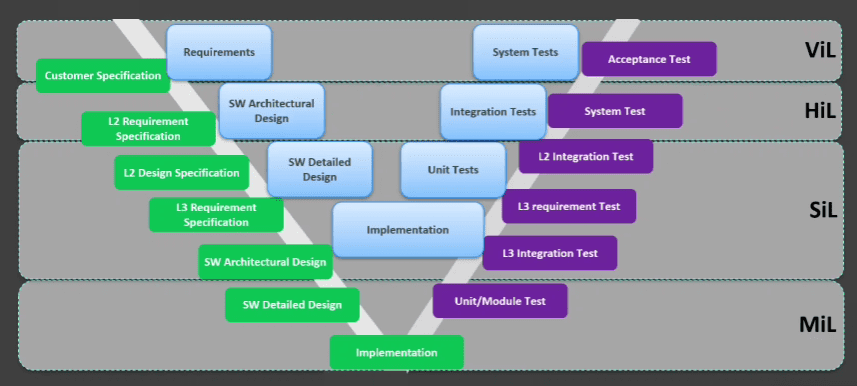
Example: In HiL testing, a physical ECU (Electronic Control Unit) is connected to simulated inputs representing real-world sensors and actuators. Engineers can test the ECU’s response to different scenarios, such as sudden braking or collision warnings, without using an actual vehicle. This allows for safe, repeatable testing of critical safety systems.
SiL testing focuses on software interactions without physical hardware. For example, engineers can test the software algorithms controlling an adaptive cruise control system to ensure they calculate accurate following distances. This is done through virtual simulation, allowing developers to refine code efficiently.
HiL is particularly useful in powertrain development, where engineers can simulate different driving cycles and observe how the engine control unit responds. This testing helps optimize fuel efficiency, emissions, and performance before physical prototyping.
HiL and SiL are commonly used in developing autonomous driving features, where engineers test perception, decision-making, and control algorithms. By simulating complex driving scenarios in a lab environment, they can assess system safety and reliability before testing on actual roads.
13. Regulatory Compliance Testing
Regulatory compliance testing ensures that vehicles meet specific government standards and regulations across regions. These standards cover everything from emissions and safety to electrical systems, ensuring that vehicles are road-legal and meet environmental and safety expectations.
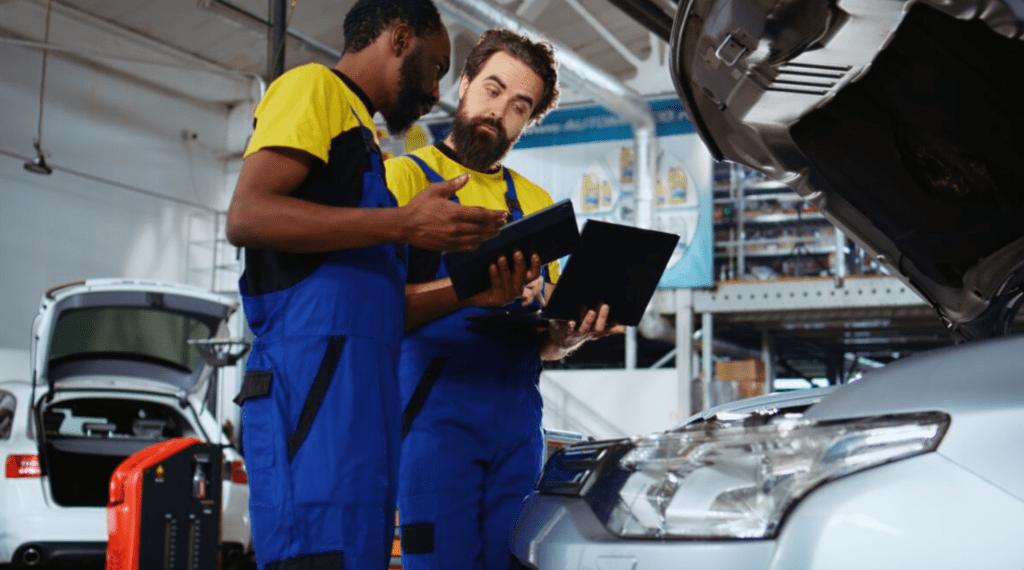
Example: In emissions regulatory testing, vehicles are assessed to meet CO₂ and NOx emission standards set by agencies like the Environmental Protection Agency (EPA) in the United States or Euro 6 standards in the EU. Non-compliance can lead to redesigns and delays, so manufacturers rigorously test emissions systems.
Crashworthiness testing is another critical aspect of regulatory compliance. Organizations like the National Highway Traffic Safety Administration (NHTSA) require vehicles to pass front, side, and rear crash tests, and the results are often used in public safety ratings. Passing these tests is crucial for market approval.
Lighting and visibility tests ensure that headlamps, brake lights, and turn signals meet regulatory standards. For instance, headlights are tested for brightness, beam angle, and reach to ensure adequate visibility while minimizing glare for oncoming drivers.
Vehicles undergo noise pollution testing to meet noise level regulations, especially in urban areas. For instance, Europe has strict noise standards for vehicles, requiring manufacturers to test and minimize noise emissions to reduce urban noise pollution.
14. Aerodynamic Testing
Aerodynamic testing assesses how well a vehicle moves through the air, minimizing drag and optimizing efficiency. Improved aerodynamics reduce fuel consumption, enhance performance, and contribute to vehicle stability at high speeds.
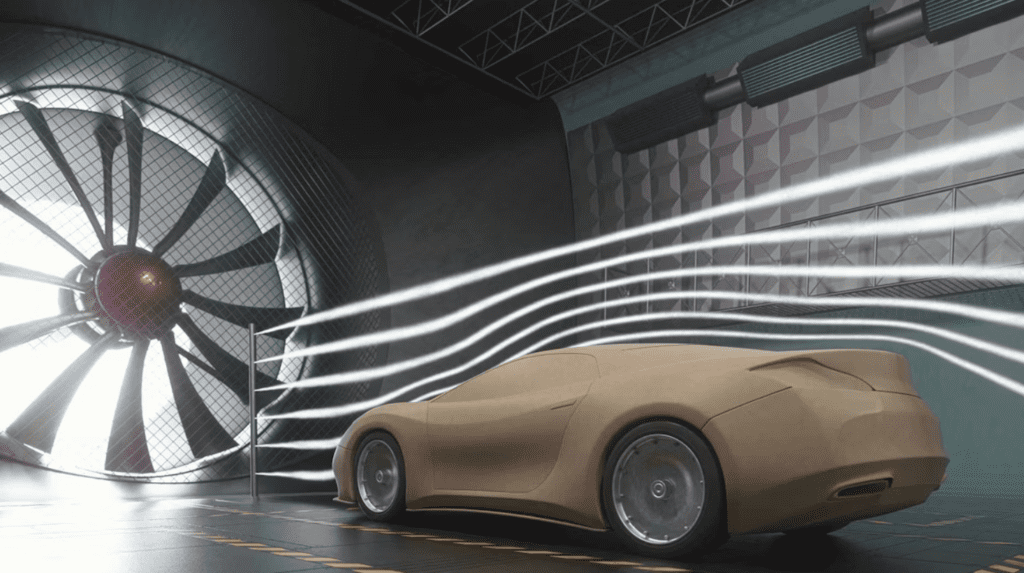
Example: Vehicles are tested in wind tunnels where engineers observe airflow patterns over the vehicle’s surface. By analyzing drag forces, engineers can identify areas for improvement, such as reshaping mirrors, modifying the roofline, or adjusting the undercarriage to improve airflow and reduce drag.
Aerodynamic testing is critical for electric vehicles (EVs), where efficiency is directly related to range. EV manufacturers use this testing to minimize drag, which extends battery life and overall range. For instance, many EVs incorporate smooth, enclosed grilles and optimized wheel designs as a result of aerodynamic testing.
Spoilers, diffusers, and other aerodynamic features are fine-tuned in these tests to improve downforce in performance vehicles. By enhancing downforce, sports cars can achieve better traction and handling at high speeds without compromising stability.
Aerodynamic testing also impacts cabin comfort by reducing wind noise. Vehicles are tested at highway speeds to see how effectively air moves around them, helping engineers reduce wind noise and improve the quietness of the interior, enhancing the driving experience.
15. Prototype and Validation Testing
Prototype testing is conducted on early versions of the vehicle to validate design, performance, and safety before mass production. This stage is essential to identify and fix issues in the vehicle’s design, ensuring that the final product meets all specifications and quality standards.
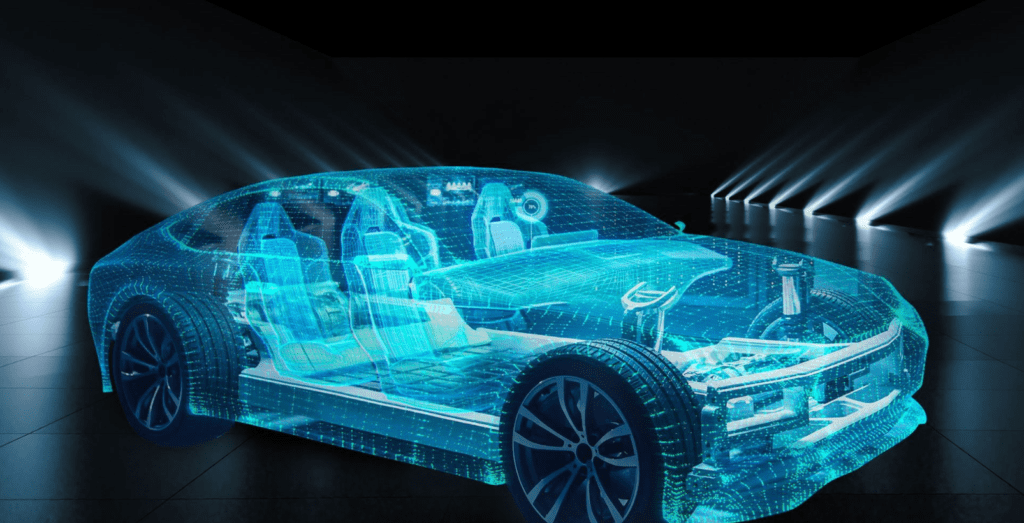
Example: Prototypes are often driven thousands of miles in different environments, such as deserts, forests, and mountainous regions, to assess durability and performance. Engineers monitor components for wear and tear, ensuring that critical systems like suspension and transmission perform reliably.
Manufacturers often perform crash tests on prototype vehicles to see how the structure and safety features respond to collisions. This allows engineers to tweak aspects like airbags, crumple zones, and seatbelt tensioners before final production to enhance occupant safety.
Prototype testing also includes assessing the vehicle’s structural integrity and chassis. Vehicles are subjected to torsional and bending stresses to ensure the frame is strong and flexible enough to withstand real-world forces without compromising safety or handling.
Manufacturers use prototypes to test and validate new technologies, like hybrid powertrains or ADAS. For example, an ADAS prototype might be tested extensively in urban and highway settings, ensuring that adaptive cruise control, lane-keeping assist, and emergency braking features function seamlessly.
16. Field and Customer Testing
Field testing, also known as real-world testing, involves placing vehicles in the hands of actual drivers who provide feedback based on their experience. Customer testing allows manufacturers to understand how the vehicle performs in daily use and what improvements can be made for user satisfaction.

Example: In field testing, vehicles are loaned to fleet operators or specific customers, who drive them under regular conditions. Manufacturers collect data on fuel consumption, ride comfort, maintenance issues, and overall user satisfaction, which helps refine the vehicle design before the official launch.
Feedback from field testing can highlight issues that weren’t apparent in lab testing, such as user experience concerns with the infotainment system, visibility challenges, or comfort problems. These insights are used to make adjustments that enhance the vehicle’s appeal to end customers.
Customer testing is particularly beneficial for electric vehicles, where real-world data on battery range, charging efficiency, and temperature effects are crucial. By gathering data from real EV users, manufacturers can address common range and charging concerns and improve the customer experience.
Field testing also provides insights into how well ADAS features are received by consumers. Users might report confusion or discomfort with certain automated functions, which can be refined or simplified to ensure a more intuitive experience for drivers in the final production model.
Conclusion:
Each of these types of vehicle testing contributes to creating a safe, efficient, and reliable vehicle that aligns with industry standards, regulations, and customer expectations. Comprehensive testing not only helps prevent costly recalls but also strengthens a brand’s reputation by delivering vehicles that meet high-quality standards and provide a satisfying, dependable experience on the road.
This was about “Types Of Vehicle Testing In The Automotive Industry“. Thank you for reading.
Also, read:
- 10 Tips To Maintain Battery For Long Life, Battery Maintainance
- 10 Tips To Save Electricity Bills, Save Money By Saving Electricity
- 100 (AI) Artificial Intelligence Applications In The Automotive Industry
- 100 + Electrical Engineering Projects For Students, Engineers
- 1000+ Control System Quiz, Top MCQ On Control System
- 1000+ Electrical Machines Quiz, Top MCQs On Electrical Machines
- 1000+ MATLAB Simulink Projects For MTech, Engineering Students
- 2024 Is About To End, Let’s Recall Electric Vehicles Launched In 2024


